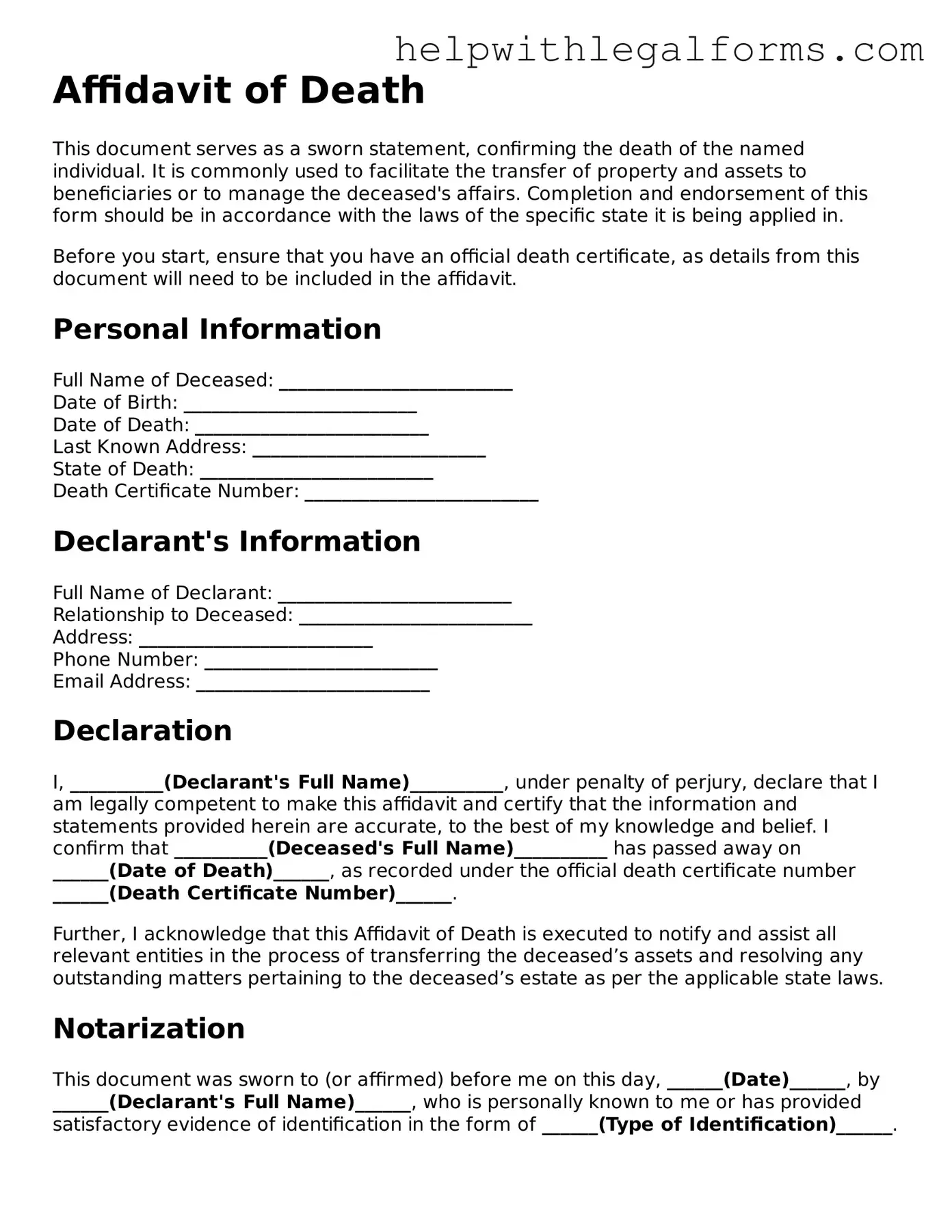Affidavit of Death
This document serves as a sworn statement, confirming the death of the named individual. It is commonly used to facilitate the transfer of property and assets to beneficiaries or to manage the deceased's affairs. Completion and endorsement of this form should be in accordance with the laws of the specific state it is being applied in.
Before you start, ensure that you have an official death certificate, as details from this document will need to be included in the affidavit.
Personal Information
Full Name of Deceased: _________________________
Date of Birth: _________________________
Date of Death: _________________________
Last Known Address: _________________________
State of Death: _________________________
Death Certificate Number: _________________________
Declarant's Information
Full Name of Declarant: _________________________
Relationship to Deceased: _________________________
Address: _________________________
Phone Number: _________________________
Email Address: _________________________
Declaration
I, __________(Declarant's Full Name)__________, under penalty of perjury, declare that I am legally competent to make this affidavit and certify that the information and statements provided herein are accurate, to the best of my knowledge and belief. I confirm that __________(Deceased's Full Name)__________ has passed away on ______(Date of Death)______, as recorded under the official death certificate number ______(Death Certificate Number)______.
Further, I acknowledge that this Affidavit of Death is executed to notify and assist all relevant entities in the process of transferring the deceased’s assets and resolving any outstanding matters pertaining to the deceased’s estate as per the applicable state laws.
Notarization
This document was sworn to (or affirmed) before me on this day, ______(Date)______, by ______(Declarant's Full Name)______, who is personally known to me or has provided satisfactory evidence of identification in the form of ______(Type of Identification)______.
Notary Public: _________________________
Signature of Notary: _________________________
Commission Number: _________________________
Expiration Date of Commission: _________________________
Instructions for Completing and Using the Affidavit of Death
- Thoroughly review the affidavit to ensure all provided information is correct and complete.
- Attach a certified copy of the death certificate to the affidavit.
- Have the affidavit notarized to validate the identity of the declarant and the authenticity of the signature.
- Use the notarized affidavit to notify relevant parties, such as banks, courts, and governmental agencies, of the death.
- Keep a copy of the notarized affidavit and attached death certificate for your records.
Note: The requirements and uses of an Affidavit of Death may vary by state. Consult a legal professional in your state to ensure compliance with local laws and regulations.
